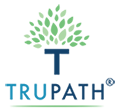Drug and alcohol addiction is a pervasive problem affecting individuals, families, and communities worldwide. According to the report Key Substance Use and Mental Health Indicators in the United States: Results From the 2021 National Survey on Drug Use and Health, almost 41 million people aged 12 or older had an illicit drug or alcohol use disorder in the past year. Only 1.1 percent of those people made an effort to receive treatment.
The devastating consequences of struggling with ongoing addiction and not receiving treatment can be seen across various aspects of life, including physical and mental health, relationships, and socioeconomic stability. Substance abuse not only leads to significant health risks but also contributes to increased crime rates, financial burdens, and societal strain. But part of the reason many people do not receive drug and alcohol treatment may be because they are unaware of the various treatment approaches available today.
To address the complex nature of drug and alcohol addiction and give people resources to make a step toward recovery, it is crucial to explore and compare different treatment options. While there is no one-size-fits-all solution, understanding the strengths and limitations of various treatment modalities can significantly contribute to developing effective recovery programs.
Traditional Therapeutic Approaches
12-Step Programs
The 12-step program is a widely recognized and influential approach to addiction recovery that Alcoholics Anonymous (AA) started in the 1930s. It is based on the belief that addiction is a chronic, progressive disease that affects individuals physically, mentally, and spiritually. The principles of the 12-step program revolve around accepting powerlessness over addiction, surrendering to a higher power, and engaging in self-reflection and personal growth.
The effectiveness of the 12-step approach has been a topic of debate among researchers and addiction specialists. While some research has shown positive outcomes for individuals who engage in 12-step programs, others have questioned the lack of scientific evidence supporting its efficacy.
One of the 12-step approach’s strengths is its widespread availability and accessibility and emphasis on peer support and accountability. This approach is especially beneficial for individuals who feel isolated or stigmatized.
Cognitive Behavioral Therapy (CBT)
Cognitive behavioral therapy (CBT) identifies and modifies negative thought patterns and behaviors. It is based on the premise that our thoughts, emotions, and behaviors are interconnected and that we can improve our emotional well-being by changing our thoughts and behaviors.
CBT has shown promising results in treating drug and alcohol addiction. Numerous studies have demonstrated its effectiveness in reducing substance use, preventing relapse, and improving overall psychological well-being. Some researchers have even called CBT the gold standard of psychotherapy. However, CBT may have limitations for individuals with severe addiction or co-occurring mental health disorders. Because of this, it may work best alongside other treatment approaches.
Motivational Interviewing
Motivational interviewing (MI) aims to enhance an individual’s motivation and commitment to change. It is based on the belief that individuals can change and that their intrinsic motivation can be harnessed through a collaborative and empathetic therapeutic relationship. The therapist guides the individual through strengthening the patient’s commitment to change.
Motivational interviewing has shown promising results in addiction treatment. Some find it particularly effective in engaging individuals who may initially be resistant or ambivalent about changing addictive behaviors. However, motivational interviewing may not be suitable for individuals with severe addiction or those who need more intensive interventions. Like CBT, it is most effective as part of a comprehensive treatment plan.
Alternative Therapeutic Approaches
Dialectical Behavior Therapy (DBT)
Dialectical behavior therapy (DBT) is a comprehensive therapeutic approach adapted for various mental health conditions and substance use disorders. DBT combines elements of cognitive behavioral therapy (CBT) with concepts from Eastern philosophy.
DBT aims to enhance emotional regulation, develop interpersonal effectiveness, improve distress tolerance, and promote mindfulness. This can help individuals with addiction manage cravings, regulate their emotions, and develop healthier coping methods.
Some studies have demonstrated the effectiveness of DBT in addiction recovery, noting that individuals receiving this therapy for substance use disorders reduced their substance use significantly and improved their emotional regulation and distress tolerance. In severe SUD cases, using DBT is often only one part of a comprehensive treatment plan.
Mindfulness-Based Interventions
Mindfulness-based approaches have gained recognition as effective tools in addiction treatment. By promoting self-awareness and acceptance, mindfulness can help individuals with addiction become more attuned to their cravings, triggers, and underlying emotions. This heightened awareness allows for more conscious choices and the development of healthier coping strategies.
Numerous scientific studies have demonstrated the efficacy of mindfulness-based interventions in addiction recovery. Mindfulness-based treatments have been associated with significant reductions in substance use and cravings.
Holistic Approaches
Holistic approaches to addiction treatment recognize the mind, body, and spirit interconnectedness. These approaches encompass a range of practices, including yoga, meditation, acupuncture, and other complementary therapies. Holistic treatments aim to promote overall well-being and support addiction recovery by addressing the whole individual.
These options may not be suitable for everyone or as stand-alone treatments for severe addiction cases. Some individuals’ physical limitations could prevent them from engaging in certain practices, while the spiritual aspects often associated with holistic approaches may not resonate with others. It is crucial to tailor the treatment approach to the individual’s needs and preferences.
Comparative Analysis
There is no one-size-fits-all approach when comparing the various therapeutic approaches for treating addiction. Often, a treatment plan will use a combination of multiple therapeutic approaches, which can be adjusted and modified as needed. With that said, you should keep a few categories in mind when comparing different approaches:
Effectiveness
Selecting a treatment option means being aware of its overall effectiveness. This includes success rates, relapse rates, and long-term outcomes. Each treatment approach has strengths and limitations, so understanding their effectiveness can help guide treatment decisions.
Integration and Combination
When considering a therapy’s success and relapse rates, it’s important to remember if you have a substance use disorder (SUD) or co-occurring disorders. These rates can vary depending on the addiction being treated, and most severe cases of substance abuse will require a combination of medication-assisted therapy (MAT) and psychotherapy to foster better long-term outcomes. A treatment facility that addresses co-occurring disorders can significantly affect the treatment outcome.
Cost and Accessibility
The financial costs associated with therapeutic approaches can vary significantly. Factors such as the duration of treatment, frequency of sessions, and the need for specialized professionals can influence the overall cost. For example, intensive residential treatment programs may incur higher costs than intensive outpatient or standard outpatient therapy sessions.
Accessibility to different treatment options is critical, as it could affect an individual’s ability to receive timely and appropriate care. Certain therapeutic approaches may be more readily available in urban areas than rural regions. Additionally, the availability of specialized providers, such as those trained in specific evidence-based treatments, may be limited in certain areas, leading to potential barriers to accessing appropriate care.
Personalized Treatment Plans
Comprehensive assessments play a pivotal role in the development of personalized treatment plans. These assessments thoroughly evaluate an individual’s physical, mental, and emotional well-being, considering factors such as their medical history, current symptoms, and any co-occurring mental health disorders.
For example, an individual with depression may also struggle with anxiety or substance abuse. By creating a personalized treatment plan, healthcare professionals can develop integrated interventions that target all co-occurring disorders simultaneously rather than treat each disorder in isolation. This approach ensures a more comprehensive and effective treatment outcome, as it recognizes the interconnected nature of mental health disorders.
By tailoring the plan to the individual’s needs and circumstances, healthcare professionals can modify and adjust interventions as necessary, ensuring that treatment remains relevant and effective throughout the individual’s journey toward recovery.
Gaining Knowledge and Taking Action
When it comes to addiction treatment, everyone’s recovery journey is unique. By comparing different approaches, we can identify the most effective strategies for addressing the complex nature of addiction and tailor treatment plans accordingly.
While having this information at our disposal is an important part of turning the tide in drug and alcohol addiction, it is equally important to take action. Therapeutic approaches to drug and alcohol treatment can be instrumental in the recovery process. However, living with a drug or alcohol addiction is a complex issue requiring trained medical professionals’ intervention. If you or someone you know has an addiction, reach out today and find a facility to develop a personalized treatment program.
Sources
Substance Abuse and Mental Health Services Administration. (2022). Key Substance Use and Mental Health Indicators in the United States: Results from the 2021 National Survey on Drug Use and Health. Retrieved https://www.samhsa.gov/data/sites/default/files/reports/rpt39443/2021NSDUHFFRRev010323.pdf
Alcoholics Anonymous. (2021 November). The Twelve Steps of Alcoholics Anonymous. Retrieved https://www.aa.org/sites/default/files/literature/The%20Twelve%20Steps%20of%20Alcoholics%20Anonymous%20-%20SMF-121.pdf
National Library of Medicine. (2013 August 26). 12-Step Interventions and Mutual Support Programs for Substance Use Disorders: An Overview. Retrieved https://www.ncbi.nlm.nih.gov/pmc/articles/PMC3753023/
American Psychological Association. (n.d.). What is Cognitive Behavioral Therapy? Retrieved https://www.apa.org/ptsd-guideline/patients-and-families/cognitive-behavioral
National library of Medicine. (2018 January 29). Why Cognitive Behavioral Therapy Is the Current Gold Standard of Psychotherapy. Retrieved https://www.ncbi.nlm.nih.gov/pmc/articles/PMC5797481/
Psychology Today. (2022 June 06). Motivational Interviewing. Retrieved https://www.psychologytoday.com/us/therapy-types/motivational-interviewing
National Library of Medicine. (2008 June). Dialectical Behavior Therapy for Substance Abusers. Retrieved https://www.ncbi.nlm.nih.gov/pmc/articles/PMC2797106/
Substance Abuse and Mental Health Services Administration. (n.d.). Co-Occurring Disorders and Other Health Conditions. Retrieved https://www.samhsa.gov/medications-substance-use-disorders/medications-counseling-related-conditions/co-occurring-disorders
National Institute of Health. (2015 June). Substance Abuse Intensive Outpatient Programs: Assessing the Evidence. Retrieved https://www.ncbi.nlm.nih.gov/pmc/articles/PMC4152944/
National Institute of Mental Health. (n.d.). Substance Use and Co-Occurring Mental Disorders. Retrieved https://www.nimh.nih.gov/health/topics/substance-use-and-mental-health#:~:text=Health%20Topics%20webpages.-,Finding%20help,your%20ZIP%20code%20to%20435748.






